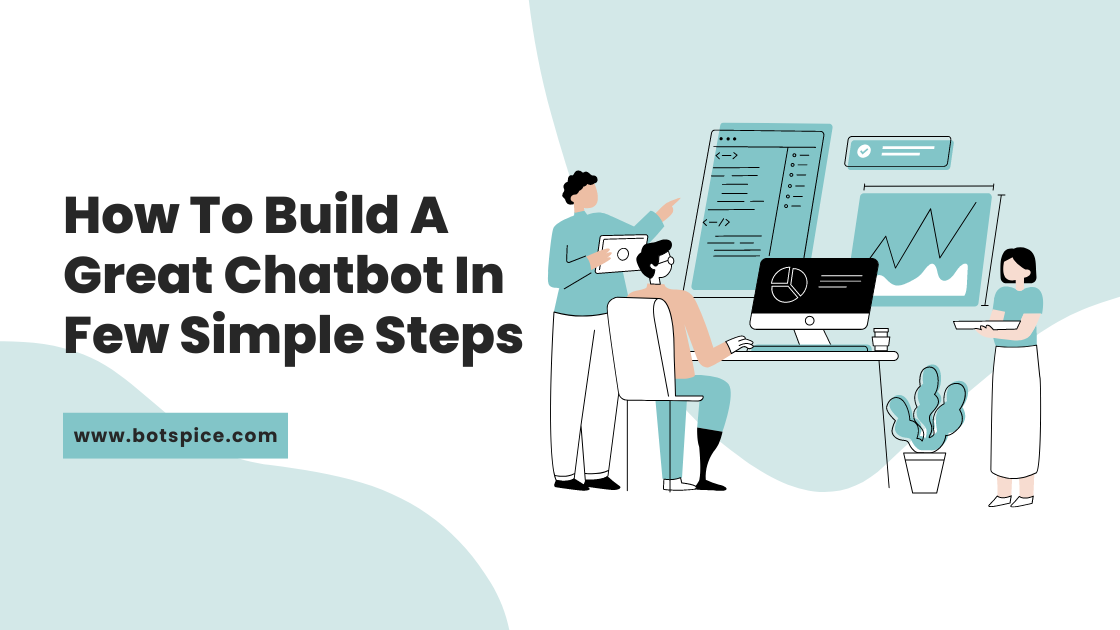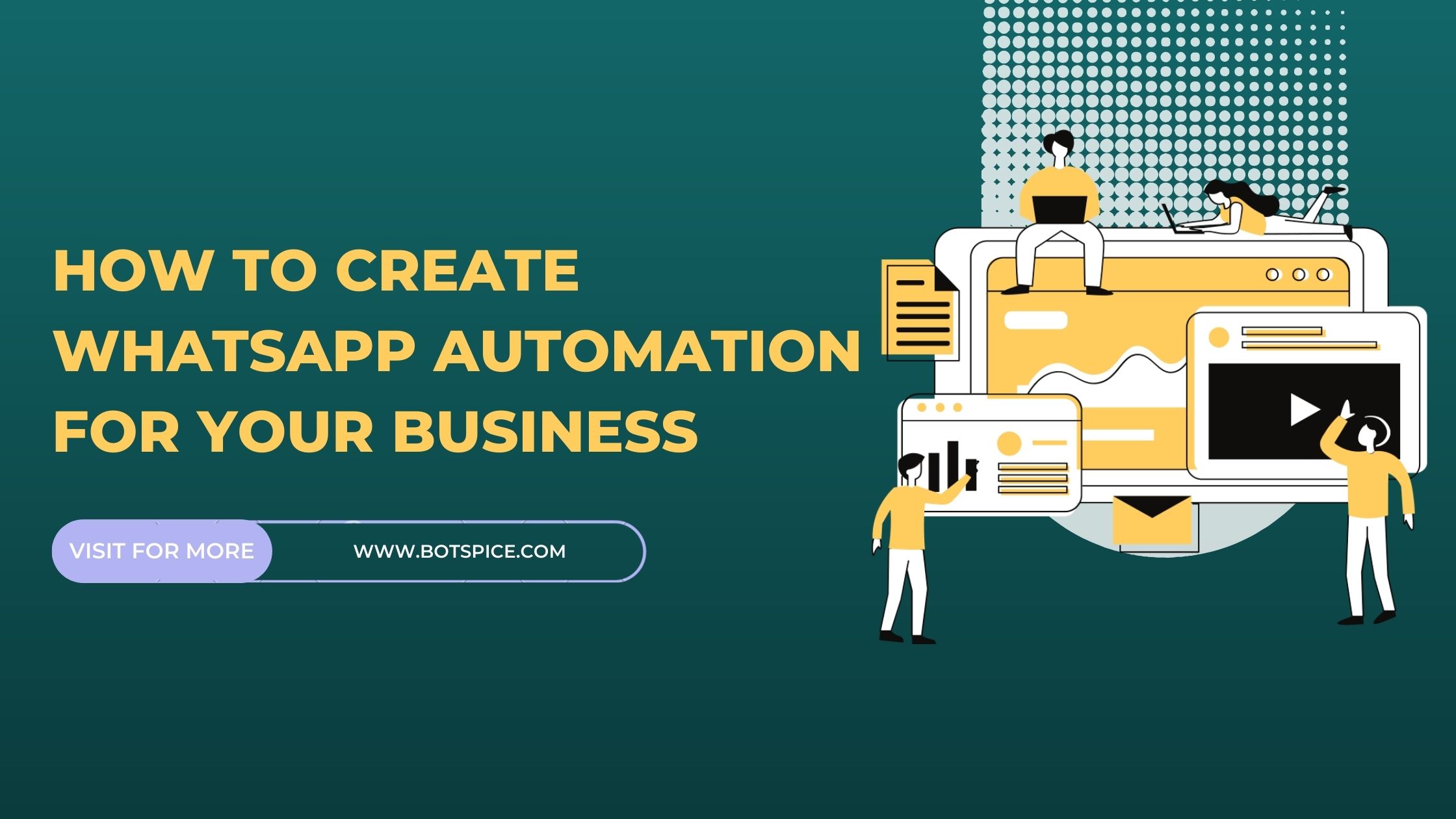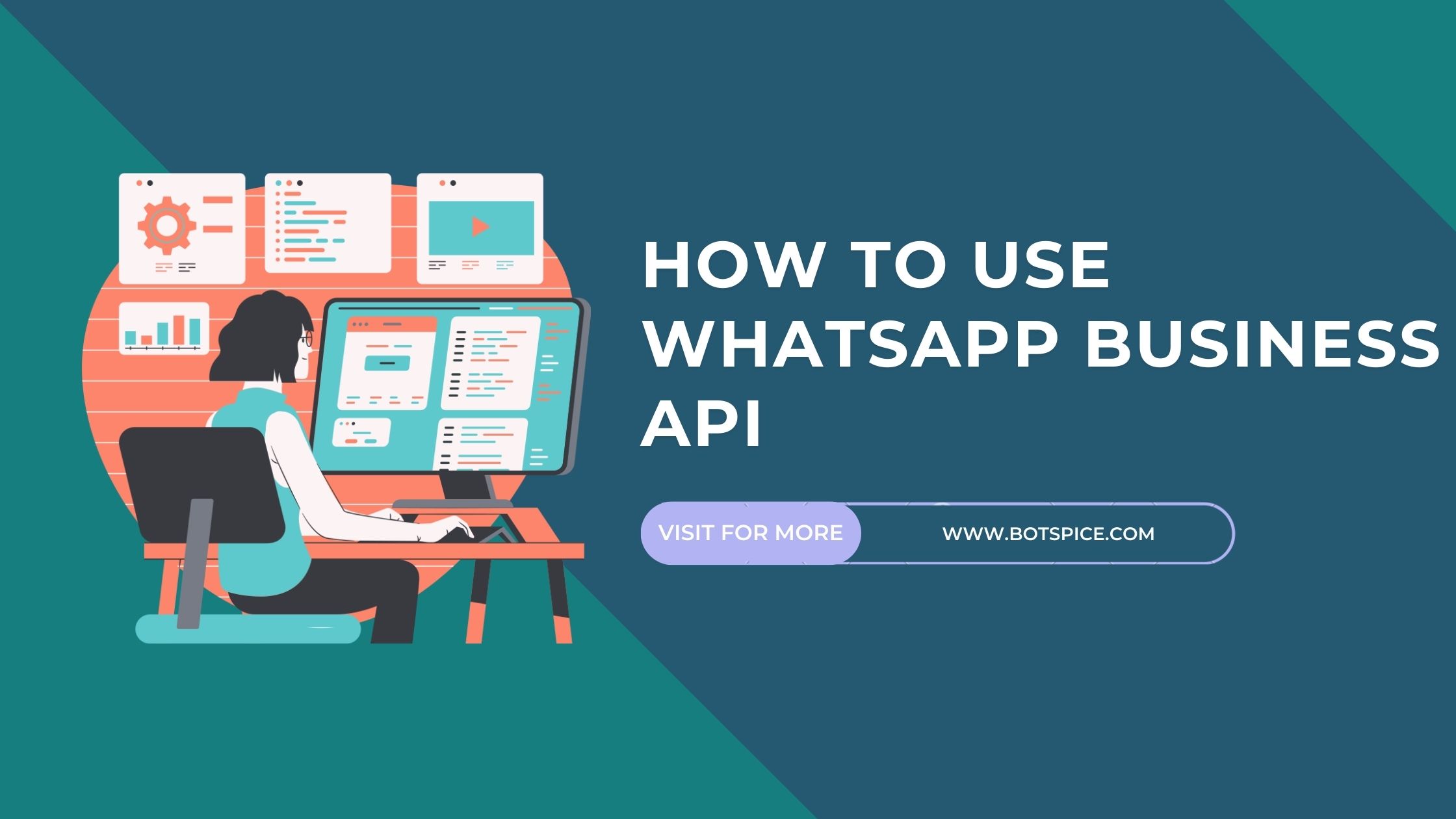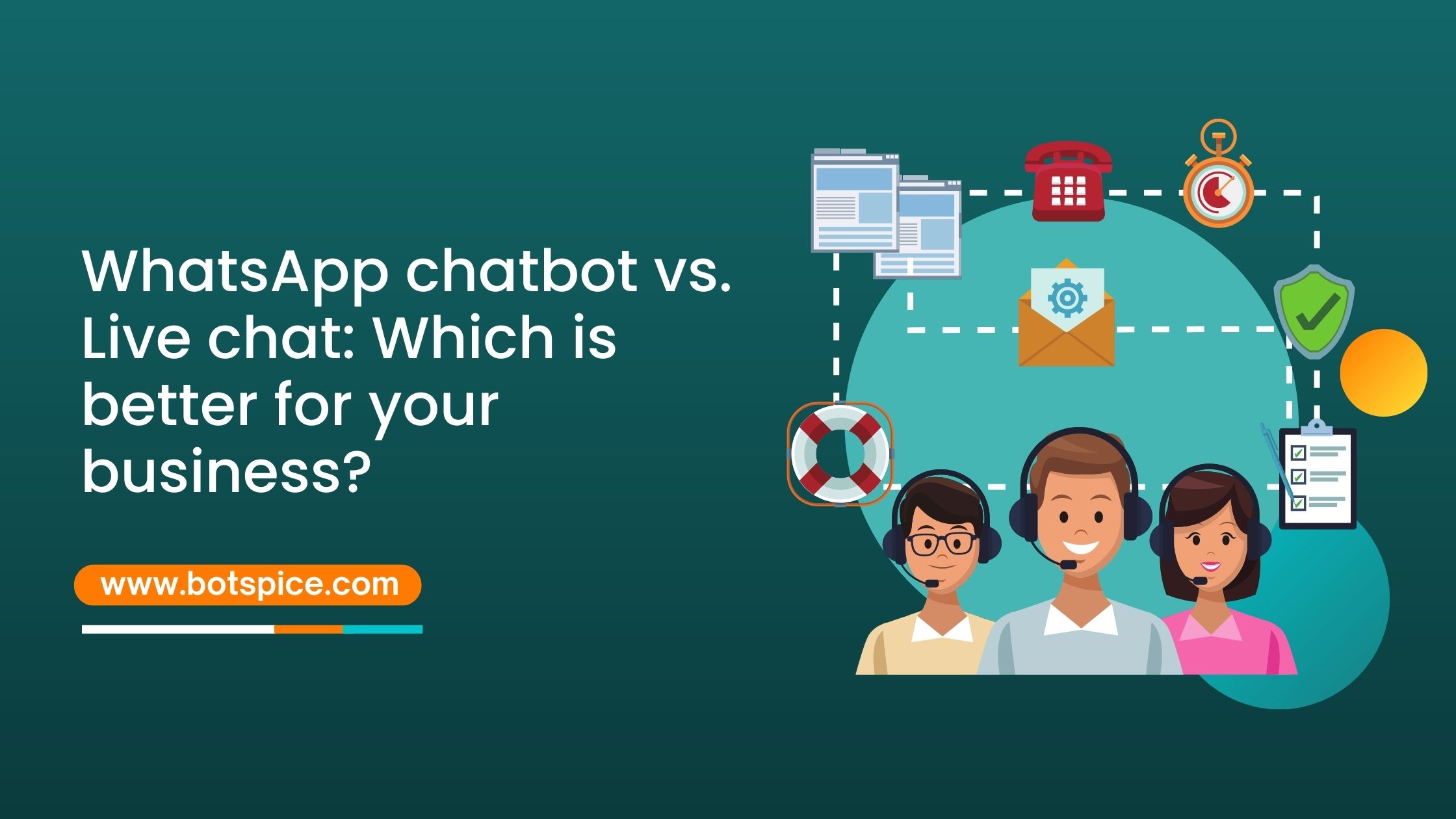Almost any website you visit today, you are greeted by a virtual assistant/chat box on your screen instantly. This virtual assistant helps you navigate the website better by collecting relevant information from you and then either answering those questions for you or redirecting you to a human operator who can help you with the desired information you were looking for. Ever wondered what this little interactive window is? Well, it is known as a chatbot and if you are a business looking to scale your website, you can create one too.
Yes! Chatbots have become a trending technology that is going to completely change the way you do business. Using Artificial Intelligence to mimic human languages and conversational styles, a chatbot will provide businesses with a more sophisticated solution for employees, partners, and most importantly, customer satisfaction. Intrigued much? Here is everything you need to know about a chatbot, why it is the future trend, how it can help your business, and how to build one in a few simple steps. Let’s begin!
Table of Contents
Building a Chatbot: The What, Why & How of It
Before we delve into chatbots, let us understand what a Bot is. To put it simply, a bot is an automated software application that is programmed to carry out multiple tasks without human intervention every time. Today, with advanced technologies like artificial intelligence that have become an integral part of our lives, the Bot has evolved much more. From booking your stay at a hotel, making a restaurant reservation, reminding you of important meetings, etc, a bot can do a lot more. They can perform tasks much faster than a human and with much greater accuracy. Bots generally operate over a network and are of different types, one of which is a chatbot.
Did you know that the first ever foundation of a chatbot was laid by Joseph Weizenbaum circa 1964? He created the Eliza, a computer program that was capable of holding normal “human-like” conversations with a person. Back then, such technology had created quite a buzz. The accuracy of a human was so much that Weizenbaum once was surprised to find his secretary speaking to Eliza as if it were her trusted confidante! By circa 1967, following the principles of the psychology of empathy, Weizenbaum was able to create a program that could hold coherent conversations. This went on to become the world’s first-ever chatbot as we know it.
Fast forward to the present times and a chatbot has had a complete makeover. One of the main reasons the new avatar is garnering huge popularity with the current generation is because now you can easily communicate with a chatbot using a chat interface or by voice as you would speak to a normal person.
While a bot is a text short for robot and has the ability to understand human speech, a chatbot is a set of computer programs that simulate human conversation. In layman’s language, a chatbot works like instant messaging. It artificially replicates the pattern of human interaction in machine learning whereby it can learn and operate by itself without requiring human touch. So, suppose you ask a question, a chatbot will revert back to you with an answer based on a predefined script and if it is something it can’t answer, it will pass you on to a human operator or send an error message (as per the programming).
How are human languages fed to a chatbot?
The next question that automatically comes to our minds is how does a chatbot process the human language? A chatbot is just like a normal computer application that has an app layer and APIs. This way, a user can easily access it and add details as per their requirements. The chatbot then maintains a log of all the past conversations and respective responses to interact with customers. Training a chatbot is also much easier than training a human hence the popularity.
Types of chatbots
Before we get into the nitty gritties of building a chatbot, it is important to know the various types of chatbots. Primarily, there are three different types of chatbots:
1. Rule-based chatbots
This is the most primitive type of chatbot and also the simplest one that people still use today. In this type of chatbot, a user converses with the bot using buttons and pre-fed options. The chatbot then collects all the relevant information to give you a specific answer. It is interesting to note that this kind of a chatbot won’t make any inferences from any previous conversations and are best suited for straightforward dialogues.
Example: The simplest example is ordering a burger from a restaurant. In a restaurant you are asked about the fillings, amount of cheese, single or double patty, etc, similarly, a chatbot asks you the same simple things in an orderly sequence. Once you have fed all the data, the chatbot processes it and takes your order.
2. Smart or intellectually independent chatbots
The next type of chatbot is a more advanced type and is intellectually independent. This means that they use Machine Learning (ML) and Artificial Intelligence (AI) to understand human emotions, sentiments and their intent. A smart chatbot gathers data from each conversation and is also capable of making small talks. This is majorly the reason why this type is so popularly used.
Example: The simplest example is “Siri” in iphones. Siri is a virtual assistant that learns from human interactions. Every conversation serves as its backup data. This data is then used to answer human queries.
3. Hybrid chatbots
As the name suggests, this is a mix of a smart and simple chatbot. In case you are wondering why we need a hybrid model, it is to reach the middle ground because often we require a chatbot to be simpler in its responses and other times we need it to be smart. Hybrid chatbots sit comfortably in between. They can understand both, a rule-based format and also human intent and sentiments.
Now that you know what a chatbot is and what it does, you can choose a type depending on your needs.
Benefits of using a chatbot
Few years ago, if someone told you that robots would actually be ruling the world, you would have brushed it off as a vague idea. But with bots and more specifically chatbots, this is now a reality. And with the list of benefits it provides, many businesses are jumping in on the chatbot bandwagon and using it to scale their business. Wondering what benefits can a chatbot provide? Here is a list:
- Gives face to your business- Using a unique chatbot gives your website a unique recognition. For many customers, your chatbot is often the first point of contact and convincing the client entirely depends on the personality of your chatbot. The choice of its name, the sentences it constructs and the way it addresses your customers, everything plays a major role in deciding whether the client will stay on the website or not.
- You can get to know your customers better- Chatbot collects data from the conversations it makes with your customers and keeps a record of them. This data helps you understand what your clients need, the kind of product and services they are interested in. This way you can also get to know of market trends and customer demands that can help your business grow.
- A 24*7 available customer service- Unlike a human worker who has time constraints, a chatbot is available 24*7. This gives you an added advantage to be available even at odd hours or holidays too, without actually being present. In the long turn, this can help you create a reliable business.
- Improved customer satisfaction- Since AI enabled chatbots understand human sentiments and regionality, they can be more empathetic towards their clients. You can quite literally have a lifelike conversation with AI based chatbots. Chatbots also understand the informal way of speaking, thus making it more friendly and approachable.
- You can optimize your cost- By this we mean that installing a chatbot will help you automate customer service and representatives who earlier spent a long time answering simple queries can now focus their energy on other important tasks while your chatbot takes care of these conversations. This in the long run will help you optimize cost.
- Your most cost effective marketing strategy- Needless to say, a chatbot is a marketing tool too because it promotes your brand and creates brand awareness too. By installing your chatbot in multiple social media platforms like facebook, instagram and twitter, you can automatically attract new customers.
Chatbot is the new way to optimize your business and there is no reason why you shouldn’t use it too. A virtual assistant like Alexa or Siri have been well received by people because they have simplified day-to-day tasks. On the other hand, a text based chatbot is aiding businesses in being present across multiple channels and platforms thereby simplifying their marketing and promotional needs.
All in all, a chatbot has greatly simplified our lives by providing quick answers and solutions to our questions/problems. And gone are the days when building a chatbot was a programme heavy task that required a lot of skill and technicality. Today, a chatbot can be used in multiple spheres (which we will discuss later in this article) and it is fairly easy to build. Let’s find out the simple steps you need to follow to create your very own chatbot:
How to build a chatbot in a few simple steps
To reiterate again, a chatbot is a conversational interface that understands human sentiments and languages. It is powered by artificial intelligence and has various components to it.
1. Components of a chatbot
- Bot Middleware- Like any other application, the bot middleware is the heart and soul of a chatbot that handles multiple tasks such as receiving voice and text messages, understanding the context of the messages, interacting with NLPs to extract the intent of the message, rummage through the backend storage to retrieve user related information and at last store all the necessary information from that conversation. The bot middleware can be installed just like a backend component of any mobile application.
- The channel connector- as the name suggests, the channel connector brings together the bot’s backend with user interface channels. The mapping capabilities of the connector allows a generic message format to be used across channels.
- The NLP engine- Here NLP stands for Natural Language Processor and it helps extract the intent and sentiments behind a message from a customer. This guides the bot to take necessary actions accordingly.
- Context store- Imagine a storehouse that stores all of your conversations so that it understands the intent of it and can continue making sensible conversation hours apart. This exactly is a context store in a chatbot.
Apart from the above major components of a chatbot, it also contains certain optional components like cognitive behaviour analysers like voice and tone analysis, image recognition and language translation.
Another thing to keep in mind while building your very own chatbot is the fact that depending on the use cases (we will discuss that later in the article), there are different types of chatbots you can create. So, for example, creating a Discord bot that can simply send text messages involves coding in platforms like Node.Js and or that you need to be able to understand coding. On the other hand, creating a Chatbot that helps you find answers to questions you are looking for in any language, requires no coding skills. The simplest way then is to use a chatbot builder like BotSpice that makes your work so much easier. The most advanced form is a conversational AI assistant that understands complex conversations and is equally complex to create (involves high level coding).
So, say you are a college student or a business owner who wants to build a chatbot, you then need to understand the nitty gritties involved in its making in order to take the next steps. Accordingly, you can either build one on your own or hire third parties to create one for you depending on the complexity.
2. Understand the scope of your chatbot
Now that you know the basic components of a chatbot, you can start building one. The first step in building a successful chatbot is defining the scope and intent of it. What exactly is the goal you want to achieve and what do you want your chatbot to do? For example, you may want to add to your customer service and customer satisfaction. Under this situation a chatbot can help you undertake some basic Q&As while your customer care team handles more complex queries. In case you want a chatbot to help you in marketing then you will have to accordingly create one that will use multiple social media platforms to push deals, offers and other branding activities.
3. Determine its use cases
The most important thing to consider after you have defined the scope is to figure out ‘What’ exactly is your chatbot going to do for your end users. Are you into a hotel business? Then maybe you want your chatbot to help customers with hotel reservations. In case you are in the tourism business then maybe you want your chatbot to show customers good deals on your website, book flights or recommend new places to visit. The list is countless and the nature of your business can help you decide the course of your chatbot’s action.
4. Get to know your end users
After you have figured out the why and what of your chatbot, the next step is to understand what your end customers are looking for. What questions are they likely to ask, their backstory and challenges too. Are your end users tech friendly? Can they hold a meaningful conversation with a chatbot? Are they familiar with your business? Which platform are you most likely to find them on? Once you have done this basic research, understanding where to integrate your chatbot becomes much easier, which is the next step in building a chatbot.
5. Give your chatbot a great personality
Once you know who your chatbot is going to be interacting with, you can finally give it some character. Without a good character, your chatbot will fail to impress your end client, just like a date gone wrong. Work on integrating conversations and responses that are interesting and engaging. You can use your brand image to begin the conversation, thereby slowly pulling your customers into conversing with the chatbot.
6. Give your conversation a flow
By giving your conversation a good flow , we mean that, each part of a conversation should make sense and it should be a “happy flow”. The conversation your client is trying to have with your chatbot should exactly go as they would want it to without any resistance. Most chatbot designers start by mapping this happy flow as this gives them a better perspective of how the conversation is going to go and if the end users will face any problems, as in their questions going unanswered. The best way to create a conversation is to have two actual people sit together and map it together as if they were having a normal conversation with each other. This will give you a better idea at executing the flow.
7. Can your chatbot handle edge cases
Humans can say the most informal things and the same can happen while chatting with a chatbot. It is only natural to talk to it in a way as if we are talking to our friend and we can end up saying the stupidest thing. It is then the responsibility of a chatbot to understand that and give a proper response. Different people have different ways of saying the same thing. For example, while ordering food at a restaurant, a customer might ask if they serve gluten free or vegan food or whether the hotel you are booking has provisions for specially abled people? These are some questions that fall outside the edge of a chatbot. The solution? You have to include these in your happy flow.
8. Hold room for error
It is only natural to make errors while having a conversation with your customer. For example, an end user asks, “where can I find a cheap hotel in London?”. To that if the bot replies, “I can tell you more about London,” the conversation is lost then and there. Therefore, it is important to train your chatbot to understand the intent of a conversation. And to hold space for error, always ask for genuine feedback from your customer so that you can improve accordingly.
9. Platforms for integration
Now, once you have finalized the basic structure, personality and conversation pattern of your chatbot, the next step is to understand which platforms you will be integrating the chatbot into, i.e., where will your chatbot live? With multiple platforms like Websites, Facebook, Instagram, WhatsApp, Twitter, etc, everyone has its own limitations and functionality. Hence it is important to fully understand the technicality behind each platform so that your chatbot runs successfully.
10. Testing and onboarding
The last step is to run a successful test of the chatbot you have built. You can send it to your friends or your business partners can help you access whether the chatbot is ready to be launched. Ask them to give you detailed feedback whether the tone and conversational style is friendly, does the tone fit your brand image? How was the overall experience of chatting with the chatbot? Was it able to answer your queries and whether you were able to successfully close a conversation? All these are important parameters to gauge the chatbot’s performance leading to a successful onboarding.
You may think that once you have built and installed your chatbot, your work is done. But it’s not! The most important task comes after this. Once your chatbot goes public, it becomes more important to monitor each conversation, rate it, gather feedback and improve upon it to make the user experience better. Afterall, that is your end goal.
Industries that can benefit from chatbots
Application of chatbots in various industries is a revolution that started a couple of years back. Today, major industries like Travel and Tourism, Hospitality and Aviation have already benefited from chatbots. Chatbots have helped businesses optimize their cost, invest more time in other important tasks and have considerably made the overall customer experience better.
It has been predicted that by 2022, AI based chatbots will become the norm and nearly 70% of white collar employees will actively interact with conversational chatbots. Here is a list of industries that are leveraging the power of chatbots to scale their business:
1. The E-Comm industry
The E-commerce industry has been booming since 2017. In 2021 alone, the global e-com sales accounted to nearly 4.9 trillion US dollars. With such mounting sales year on year, it is difficult to sustain customers using just traditional methods of sales like email, phones and social media alone. In doing so, you would need a ginormous sales system and human support, which isn’t feasible. In jumps the conversational chatbots that will make your work so much easier by saving time, energy, money and considerably shortening the sales cycle. In addition to that you can also integrate your chatbots into multiple channels which gives your brand a better recognition value that directly impacts your sales.
2. The travel and tourism industry
Next industry that has seen unprecedented growth since our social media awakening is the travel industry. People are spending dollars each year travelling to new destinations which are mostly international. Now, as a travel company, you must be well equipped to accommodate any type of queries arising at any hour of the day because most of your clients would be global clients. While it may not be possible for humans to be working round the clock everyday, a chatbot can. Your chatbot can not only help in sales but also help in reservations, general information for tourists like seasonal queries, climatic conditions, covid-19 safety protocols, direction from airport etc.
3. The Healthcare Industry
The healthcare industry everywhere is reeling under a lot of pressure, especially after covid-19. Doctors, nurses and other medical staff are already overburdened with a lot of work everyday. In case you are wondering how a chatbot can help optimize cost and time in this industry,then think about the small but important tasks like scheduling appointments, admissions, post-release formalities, filling up forms, etc. These can be done by chatbots thereby reducing human efforts and maximising results.
4. The real estate industry
Needless to say, the real estate business is another booming business that shows a good promise of only progressing in the years to come. Sales calls in this business matters more than anything and it is likely that you are missing out on prospective clients everyday due to a busy schedule. Chatbots can take away that task of yours and help you convert clients into successful businesses. They can schedule visits, give information about the requested property, share and collect documents.
5. The Hospitality industry
The hospitality industry is a completely technology driven industry that relies heavily on users spending time on the internet. In the hospitality industry, a chatbot can help book and cancel reservations, book cabs for customers, auto order food and also provide local data like good restaurants and places to explore nearby. You can also feed your chatbot to provide additional information about in-hotel services like spa, library, sports facility if available.
6. In the HR industry
Implementing chatbots in the HR industry is gaining much popularity in recent years. A chatbot can help new employees with vital information like company policy, maternity leaves, casual and sick leaves. It can also help with other HR tasks like recruitment, onboarding and initial training. In addition to that, a chatbot can keep a track of patent records, hours in office and attendance.
7. The banking industry
Last but certainly not the least is the banking industry that is benefiting from conversational chatbots. With everything now at the click of a button, customers can perform complex tasks like money transfer, authenticate account details, open a bank account and much more. It has been made easier by chatbots that are available 24•7 regardless of a customer’s time and location.
Apart from these major industries, a chatbot can be used by education, food, aviation and other small and medium sized businesses too. A chatbot can help you totally redefine customer service by being available round the clock, prompting meaningful answers to queries, by giving a one-on-one response and also giving a personal touch to conversations. This way, longer time will be spent by customers on the chatbot interface. The end result? Successful sales!
In case you are a small business, it is only justified that you might be low on manpower initially and have a lot to handle at the same time. A powerful chatbot can come in handy during such situations by helping you generate leads, promoting your brand, sending out deals and handling customer service. You can also train your chatbot to monitor consumer data to gain meaningful insights like buying patterns, items interested in, deals and promotions to push, etc. A chatbot also keeps a regular log of conversation. This can be analysed to better serve your customers’ needs. A chatbot can also be used specifically for marketing purposes. While doing so they can use targeted messaging to engage with their desired audience.
Chatbots can also help you with post marketing by making the client onboarding a seamless process. For example, chatbots ask questions to customers asking if they found the product they were looking for and if not, then whether they would like any help in doing the same. This can help the chatbot push the client towards a positive conversation channel by finding the right product as requested by them.
Propel your business in the right direction using conversational chatbots
The age of conversational chatbots is here to stay and it’s time you too step on the trend. Chatbots are steadily transforming customer satisfaction and you can mould it anyway to serve your purpose. Hence, you need to brainstorm a plan to get the maximum out of your chatbot in terms of lead generation, customer insights and customer support. Start by devising why you need a chatbot and what you want it to do for you and always test your chatbot first to avoid bumps along the road. Post integrating your chatbot, keep monitoring it to get feedback so you can improve upon it. There are multiple platforms where you can build a chatbot like Drift chatbot, BotSpice, WotNot, Intercom etc. These platforms work with your best intent in mind and lets you curate a conversational bot that would serve your business purpose.







